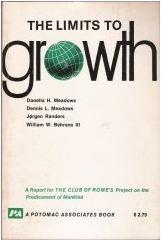It is exactly 50 years since The Limits to Growth was published – a “report to the Club of Rome on the predicament of humankind”. In this report – which became a world-famous book, still selling globally today – the researchers used computer models to develop future scenarios for what they called World3, using population, food production, industrial output, pollution, and consumption of nonrenewable natural resources as data sets to predict where humanity was heading. One of the conclusions of The Limits to Growth was that, without major changes, “the most probable result will be a rather sudden and uncontrollable decline in both population and industrial capacity” (within 100 years from 1972).
Come 2020 and a young researcher in the US by the name of Gaya Branderhorst, presently working for consulting firm KPMG, decided to test the old computer models with fresh data for her master’s thesis. The result was a highly interesting paper called “Update to Limits to Growth – Comparing the World3 Model with Empirical Data”. Based on this comparison, using data available from 2019, Branderhorst concludes that the two scenarios in The Limits to Growth that match present reality closest are “business as usual 2” (BAU2) and “comprehensive technology” (CT). In both scenarios, the growth of human society comes to a halt, in BAU2 abruptly and highly painfully around 2040; in CT in a more measured manner with the intelligent use of technology helping ensure a softer landing. Branderhorst writes that both may more or less happen at the same time – an abrupt and very painful decline in the poorer regions of the world, whereas the richer nations may manage to protect themselves better through the comprehensive use of technology. Of course, this is a completely unacceptable outcome, which only serves to increase global inequality.
In any case, we most likely do NOT have another 50 years to play the fiddle while Rome burns. We need the energy, passion, inventiveness and willingness to act found in people such as those who make up the global NELIS community. We need to jump to the future and pull from there. Forget breaking through the old, just leave it behind; bypass the obsolete and join forces with like-minded spirits, who are already IN the desired future. As science fiction author William Gibson wrote, “the future is already here – it’s just not very evenly distributed”. Let us jump into that future and make it more evenly – and fairly – distributed!
By: Peter David Pedersen, NELIS Co-founder


